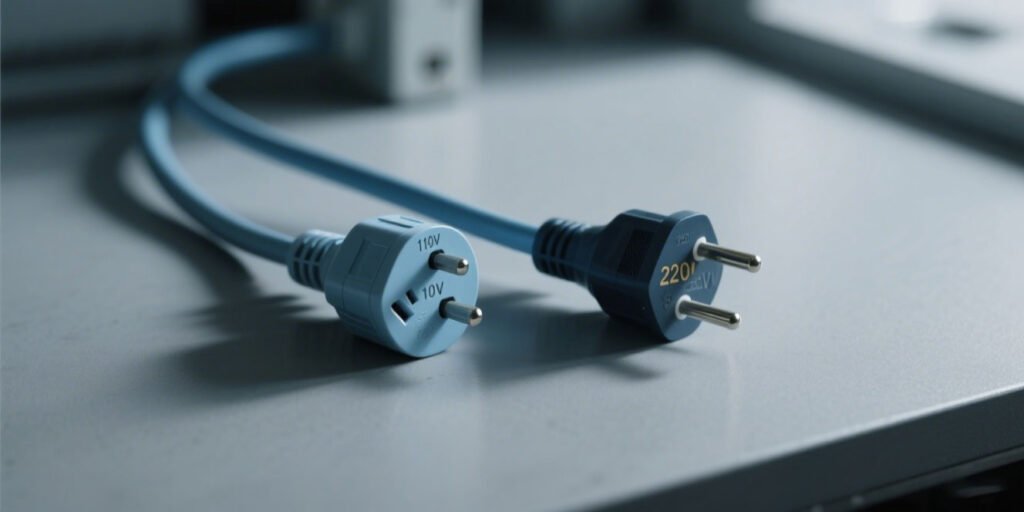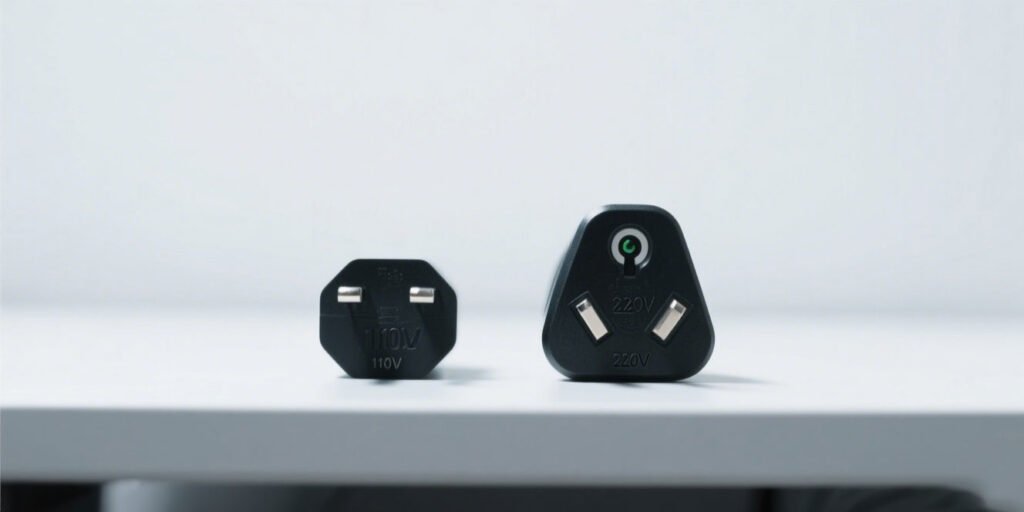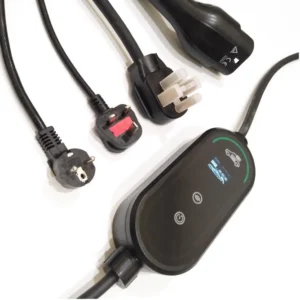Have you ever noticed that 110V and 220V appear in the parameters of various EV charging piles? It seems that both charging methods can charge EVs, but are there significant differences in charging efficiency and cost? This article will compare the two and hope to help you choose chargers with different voltages.
Unlike China, the power supply voltage in American homes is 110V and 220V. Sometimes, it can be difficult to choose the right voltage. In general, what voltage to choose depends on what kind of home appliances you want to support.

The Origin of 110v and 220v
The electric light was invented by Thomas Edison, whose electric company dominated the U.S. at the time, making the best use of the efficiency of the light bulb. Considering the 10% line loss, the optimal residential voltage is 110V.
In the early days of China, many of our industrial technologies came from the Soviet Union, so the electricity standards were also inherited from the Soviet Union. And obviously, 220-volt is one of the inherited things. Tesla invented three-phase 240-volt AC electricity, but based on safety reasons, he also stepped down the voltage to 110 volts.

The main difference between 110V and 220V:
regions:
110V: Usually refers to single-phase 110- 120V (North America, parts of Japan, etc.) refers to 100V-120V
220V: Usually refers to single-phase 220- 240V (Europe, most parts of Asia, Africa)
Physical Essence(different voltage values):
This means that for the same resistance, a 220V system will produce about half the current of a 110V system.
Wire Request:
The greater the current, the greater the heat generated by the wire (the heat generated is proportional to the square of the current), which means 220V allows to use of relatively thinner copper to transfer. It can help to save copper material costs, reduce wiring space, and reduce line loss (less energy waste), which is especially beneficial for long-distance power transmission or high-power electrical appliances.
Safety reason:
The magnitude of the current in the human body and the duration of the current flow determine the degree of harm to the person.
The safety voltage for the human body is 36V. If it exceeds this threshold, whether it is 110V or 220V, it will be fatal to humans. Just like the reciprocal tariff policy between China and the United States, if it exceeds 50%, it will be impossible to trade. Or if you fall from a building, there is no difference between falling from the 20th floor or the 30th floor.
However, 220V/240V has a higher voltage, and the electric shock injury caused under the same conditions is usually more serious and dangerous, and is more likely to cause ventricular fibrillation.
In real scenario applications:
Voltage compatibility: Most appliances are designed to operate only within a specific voltage range (marked on the nameplate or the plug).
First, you need to understand the difference between wide-voltage electrical appliances and non-wide-voltage electrical appliances
Wide voltage electrical appliances: Mobile phone/laptop chargers, digital camera chargers, EV charging stations, Designed for “wide voltage input” (e.g. nominal 100-240V, 50/60Hz). Such appliances can automatically adapt to both 110V and 220V systems, and can usually be used worldwide with just a simple plug converter.
For example, an ANS portable charger nominal 100- 240V, 50/60Hz is regarded as a wide-voltage electrical appliance that can be used with both level 1 and 2 charging. What you need to do is prepare an adapter like NEMA 5-15 to 14-50 or 14- 30. Then, it should be compatible with different outlets.
Non-Wide voltage electrical appliance: old-school Incandescent lamp, electric iron, electric kettle, matched voltages must be used, otherwise bulky and expensive voltage converters (transformers) are required
Cost:
110V systems generally have higher wiring and installation costs ( thicker wire); The 110V system has a higher current, so components such as circuit breakers are more expensive.
110V vs 220V: Which one is more suitable for EV charging
After understanding the difference between the two voltages, which one is more suitable for electric vehicle charging?
Charging Speed:
| LEVEL | Voltage | How long to charge a 55 kWh battery | Scenario |
| 1 | 110-120 | 30-35 hours | Overnight charging, slow charging |
| 2 | 220-240 | 5-6 hours | Quick top up |
Does charging with different voltages affect the health of your car’s battery?
As mentioned above, EV chargers are wide-voltage electrical appliances, nominal 100- 240V, 50/60Hz so that they can charge the EV with two voltage levels. Strictly speaking, the two charging methods will not damage the battery. Because they are both slow charging compared to DC fast charging. But considering safety, 110v is applicable; considering relatively fast AC charging, please choose 220V.
Which one is cheaper?
220V for sure. Electricity costs depend on the energy consumed (kilowatt-hour kWh), and energy = power x time. A 1000W appliance, whether working at 110V or 220V, consumes 1 kWh for 1 hour as long as the power is 1000W.
The shorter charging time of 220V means less wire energy loss during charging, so it saves more electricity bills.
Will outer aspects like Fahrenheit influence charging speed?
Low temperatures affect charging speeds for both, but the impact is more severe for level 1, given the length of the charging time.
220V charging can provide greater power and can generate heat under low temperature conditions, so it can better maintain the charging speed。
When using a 110V socket, the charging speed is slow, and more heat is lost, resulting in a greater impact of low temperature
110V vs 220V: which one is better?
220V is better in most scenarios. While 110V can be used in some regions.
220V level 2 has a faster charging rate, lower cost, and shorter charging time, resulting in less heat loss. In addition, electric vehicle batteries are now larger, some of which are 100-degree batteries, so using level 1 charging is too time-consuming.
But if you only consider a short daily routine and you don’t mind long time charging, level 1 charging is also a good option with safe consideration.








